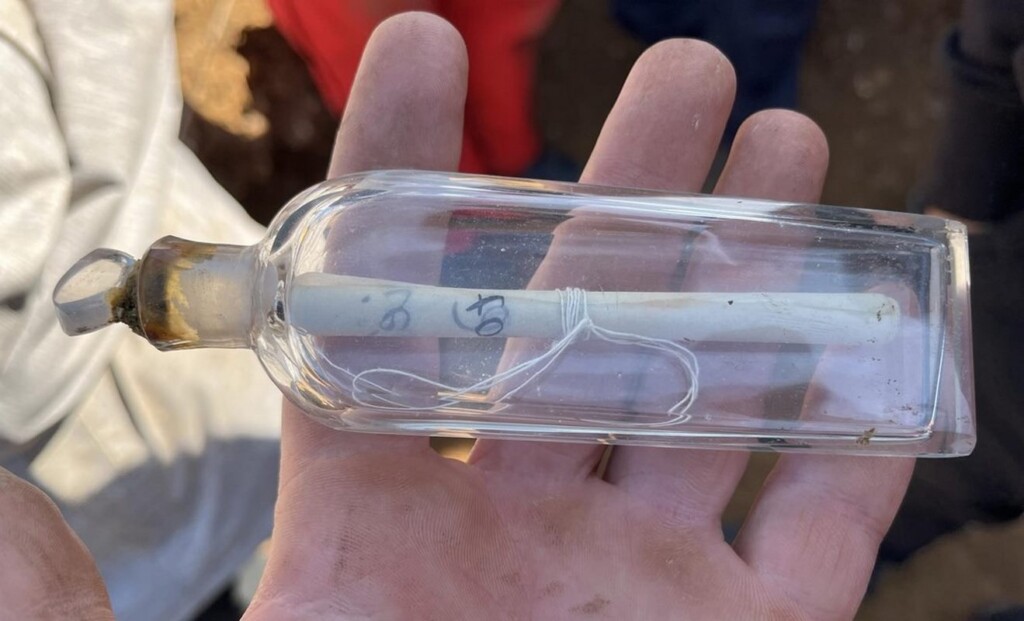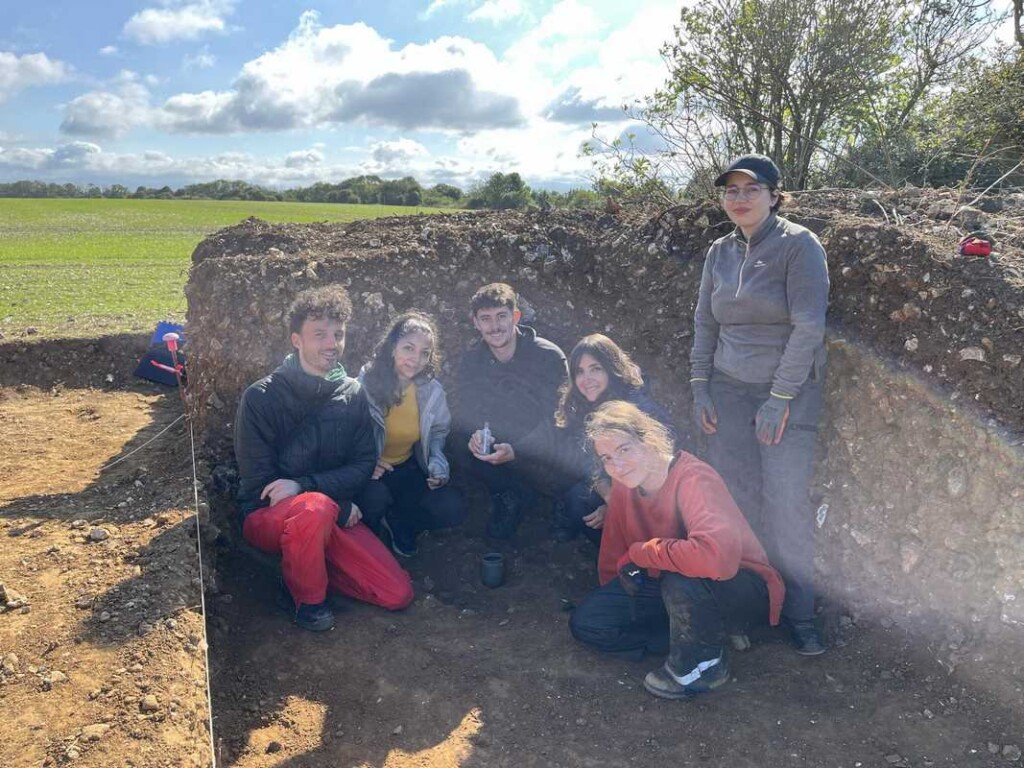 credit – Guillaume Blondel, Archaeological Service of the City of Eu
credit – Guillaume Blondel, Archaeological Service of the City of EuA team of student archaeologists in France received an amazing surprise while working on a site dating to Gaulic times.
Carried out under the direction of Guillaume Blondel, director of the municipal archaeological service of the city of Eu, the excavations delivered, among other things, a moving and very special testimony from the past.
Located in a previously investigated section of the site, a message was discovered in a small glass bottle from the 19th century accompanied by two coins: a “time capsule” buried almost 200 years ago, a statement from the service read.
“P. J. Féret, a native of Dieppe, member of various intellectual societies, carried out excavations here in January 1825. He continues his investigations in this vast area known as the Cité de Limes or Caesar’s Camp.”
The message in a bottle had been carefully placed in a ceramic pot dating to a much earlier century so that future archaeologists would be sure to find it.
“It was an absolutely magic moment,” Mr. Blondel told the BBC. “We knew there had been excavations here in the past, but to find this message from 200 years ago… it was a total surprise.”

credit – Guillaume Blondel, Archaeological Service of the City of Eu
“Sometimes you see these time capsules left behind by carpenters when they build houses. But it’s very rare in archaeology. Most archaeologists prefer to think that there won’t be anyone coming after them because they’ve done all the work!”
Local archives indeed place P. J. Féret in the area as a historical excavator at the time the letter was dated.

credit – Guillaume Blondel, Archaeological Service of the City of Eu
The work was funded and carried out in partnership with the Regional Archaeology Service to preserve archaeological sites that are endangered with the decline of the coastline. Already a part of the ‘oppidum’ or fortified Gaulic camp, has fallen away with the crumbling of the coastal hillside on which it was perched.
The Gauls were a series of interconnected feudal (at best) and tribal (at worst) societies that shared societal, cultural, and warrior practices, and who inhabited most of central and western Europe during the time of the Roman Republic.
Gaius Julius Caesar waged a campaign to pacify Gaul, hence the name “Caesar’s Camp,” which brough Spain, France, and Belgium, under Roman control. Researchers Discover 200-year-old Message in a Bottle: A ‘Magic Moment’







 Understanding the genes that determine human facial shape could one day provide valuable information about person's appearance using just their DNA. The discovery of five genes involved in facial form could have applications in forensics, say the authors of a study. Virtually nothing was known about the genes responsible for facial shape in humans. The study of almost 10,000 individuals is published in Plos Genetics. Lead author Manfred Kayser from the Erasmus University Medical Center in Rotterdam, the Netherlands, said: "These are exciting first results that mark the beginning of the genetic understanding of human facial morphology. "Perhaps some time it will be possible to draw a phantom portrait of a person solely from his or her DNA left behind, which provides interesting applications such as in forensics." The researchers used magnetic resonance imaging (MRI) of people's heads together with portrait photographs to map facial landmarks, from which facial distances were estimated. They then conducted what is known as a genome-wide association study, which is designed to search for small genetic variations that occur more frequently in people with particular facial types. Prof Kayser and his colleagues identified five candidate genes associated with different facial shapes - known as PRDM16, PAX3, TP63, C5orf50, and COL17A1. These associations mean the likelihood of a certain face shape can be estimated, and a full DNA-to-portrait mapping still remains a distant prospect. But together with recent findings that suggest DNA can also be used to predict hair and eye colour and a 2010 study in which age can be inferred from blood, forensics is set to add a suite of powerful new DNA-based tools to its arsenal.
Understanding the genes that determine human facial shape could one day provide valuable information about person's appearance using just their DNA. The discovery of five genes involved in facial form could have applications in forensics, say the authors of a study. Virtually nothing was known about the genes responsible for facial shape in humans. The study of almost 10,000 individuals is published in Plos Genetics. Lead author Manfred Kayser from the Erasmus University Medical Center in Rotterdam, the Netherlands, said: "These are exciting first results that mark the beginning of the genetic understanding of human facial morphology. "Perhaps some time it will be possible to draw a phantom portrait of a person solely from his or her DNA left behind, which provides interesting applications such as in forensics." The researchers used magnetic resonance imaging (MRI) of people's heads together with portrait photographs to map facial landmarks, from which facial distances were estimated. They then conducted what is known as a genome-wide association study, which is designed to search for small genetic variations that occur more frequently in people with particular facial types. Prof Kayser and his colleagues identified five candidate genes associated with different facial shapes - known as PRDM16, PAX3, TP63, C5orf50, and COL17A1. These associations mean the likelihood of a certain face shape can be estimated, and a full DNA-to-portrait mapping still remains a distant prospect. But together with recent findings that suggest DNA can also be used to predict hair and eye colour and a 2010 study in which age can be inferred from blood, forensics is set to add a suite of powerful new DNA-based tools to its arsenal.
.png)

